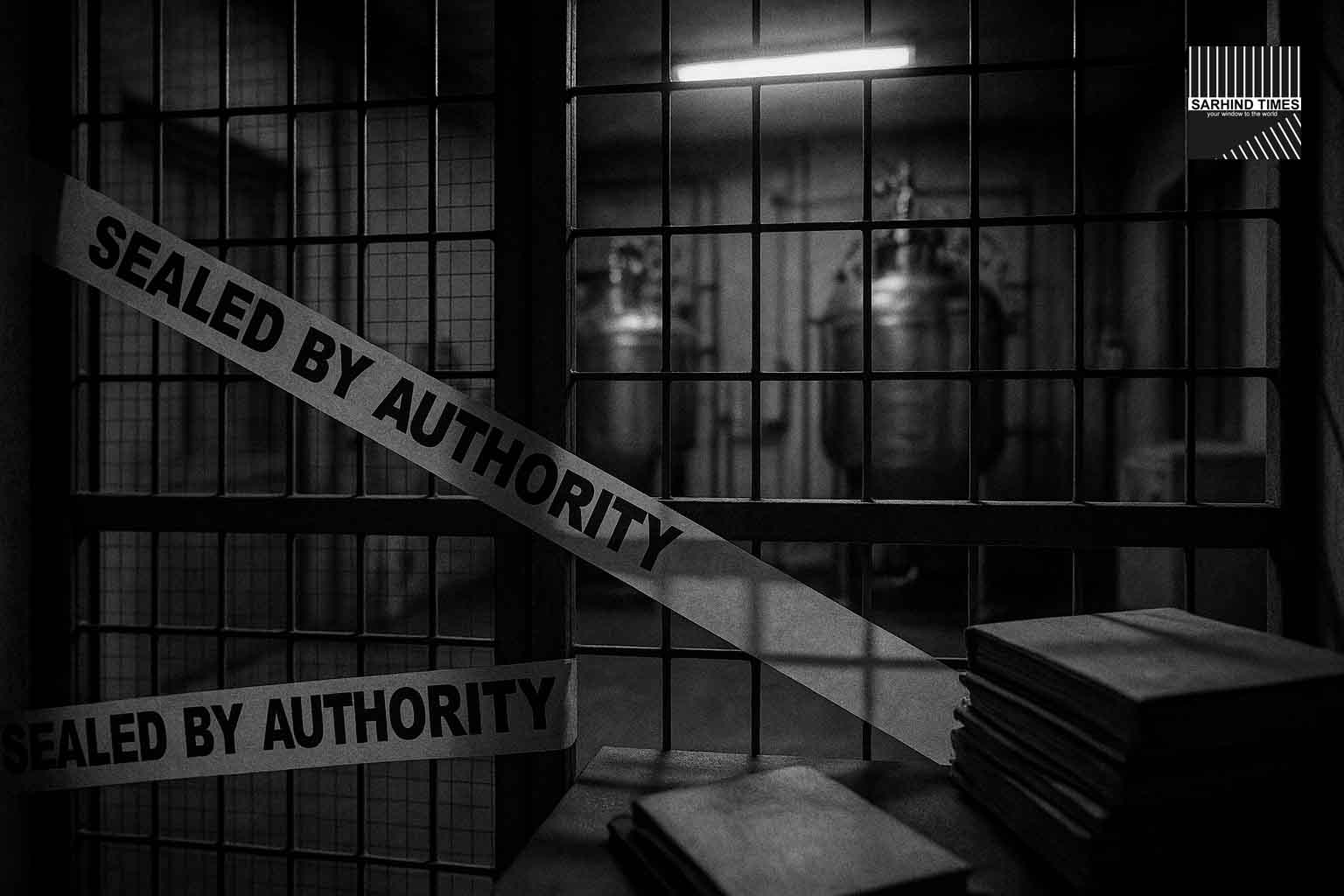Dateline: Chennai/Bhopal | Tuesday, October 14, 2025 (IST)
In an escalating enforcement sweep after the deaths of at least 22 children linked to a contaminated cough syrup, the Enforcement Directorate (ED) on Monday searched multiple locations in Chennai tied to Sresan Pharmaceuticals and suspended state drug-control officials under the Prevention of Money Laundering Act (PMLA). The raids—spread across seven premises, according to initial counts—follow the Tamil Nadu government’s move to shut the plant and revoke the company’s licences after regulators documented more than 300 violations in procurement, production, and testing at the facility that manufactured “Coldrif” syrup.
The clampdown comes amid a widening criminal probe. Sresan owner G. Ranganathan (75), arrested in Chennai on October 9 and taken to Madhya Pradesh by a Special Investigation Team (SIT), is in judicial custody on charges including culpable homicide not amounting to murder. On Monday, investigators led him back to the Sunguvarchatram (Kancheepuram) factory for a document-and-sample trail, even as ED officers scrutinized ledgers, vendor payments, and communication chains for signs of kickbacks or laundering of illicit proceeds.
At the retail end, the crackdown has already reached the supply chain: Kataria Pharmaceuticals in Jabalpur saw its dealer licence scrapped after authorities found mishandling and unauthorized storage of Coldrif consignments. Officials sealed warehouses, seized inventory, and sent fresh samples to labs to map the contamination’s spread.
What the ED Is Chasing: A Financial Map of Negligence
The ED probe aims to determine whether regulatory negligence was incentivised—that is, whether payments, commissions, or other transfers greased the wheels of oversight failure. On the criminal side, police filings in Madhya Pradesh have raised a separate but related allegation: that a government doctor received a 10% commission to prescribe the syrup. The court record has become a significant thread for both state police and ED financial forensics, with authorities indicating they are also checking family-linked medical retail channels that allegedly stocked the syrup.
Why that matters: If commissions or inducements are substantiated, they could connect frontline clinical practice with manufacturer and distributor incentives, strengthening the prosecution’s case not only under IPC but also under PMLA, where proceeds of crime and their layering/integration become chargeable. The ED’s toolkit—attachment of properties, bank freezes, and custodial interrogation—is often used to secure assets for potential victim compensation and to prevent dissipation of suspect funds pending trial.
The Regulator’s Hammer: Licence Revocation and Plant Closure
The Tamil Nadu Drugs Control Administration initiated its crackdown after an October 1 alert from Madhya Pradesh FDA. Inspectors documented 364 critical issues across the Sresan unit—ranging from procurement records and batch documentation to testing, packaging, and in-process controls. The plant was ordered to cease manufacturing and distribution from October 3; on Monday, the government formally revoked the company’s licence. A parallel government note said Diethylene Glycol (DEG)—a toxic industrial solvent—was found in Coldrif, a determination later echoed in public advisories that flagged acute renal failure in young children exposed to the adulterated syrup.
How DEG kills: Metabolically converted to toxic acids, DEG can cause metabolic acidosis, acute kidney injury, central nervous system depression, and death—especially in children. The World Health Organization issued a broader health alert on October 13 naming Coldrif alongside two other Indian syrups with dangerously elevated DEG levels and urged reporting and removal of suspect batches. India’s CDSCO said the tainted syrups were not exported, while the U.S. FDA confirmed none were shipped to the U.S.—an important but limited reassurance given domestic exposure.
Anatomy of a Failure: From Factory Bench to Pharmacy Shelf
1) Manufacturing Controls: The Sresan dossier—364 critical nonconformities—reads like a checklist of what can go wrong when Good Manufacturing Practices (GMP) are either ignored or superficially observed. Investigators will be testing not only DEG levels in finished product but also raw material identity/purity, solvent sourcing, and in-process testing logs that should have flagged anomalies long before release.
2) Distribution Chain: The Jabalpur dealer action reveals how unauthorised storage, temperature neglect, and poor documentation confound traceability. Regulators found missing paperwork and improper warehousing—an environment where substandard or spurious products can mix into legitimate flows and evade recall nets.
3) Clinical Interface: The 10% commission allegation, if proved, spotlights a dangerous breach of clinical ethics and pharmacy law: prescription bias driven by payments. It also suggests that “demand creation” tactics may have widened exposure in certain districts, complicating both accountability and restitution.
The Human Toll: What We Know So Far
By the latest tallies from agency and press reports, at least 22 children—most of them under five—have died in Madhya Pradesh’s Chhindwara and neighboring districts. Some early reports placed the number higher, at 23–24, pending lab confirmations and attribution protocols. Clinical patterns point to renal failure following ingestion of the contaminated Coldrif syrup. The SIT’s timeline traces procurement from the Tamil Nadu plant to central Indian stockists, with seizures and warehouse seals underway.
Families’ demands are two-fold: speedy chargesheets and coordinated recall/notification so that every bottle is removed from circulation. Patient-rights advocates are urging cross-state recall standardization—common batch-alert formats, automated distributor notifications, and public dashboards that show where suspect lots have been recovered.
Governance Gaps: Why Do These Tragedies Keep Repeating?
India has faced multiple DEG tragedies over decades—often featuring similar fault lines: lax solvent procurement, identity testing failures, paper-compliant but practice-poor QA, and fragmented recalls that depend on manual phone chains. A detailed investigation by the Bureau of Investigative Journalism this week underscores the global recurrence of toxic syrup events and the regulatory learning gaps that allow history to rhyme.
What experts recommend now:
- Source Verification & Barcoding: Mandatory supplier qualification for all glycols/solvents, GS1 barcoding on inputs and finished goods to track lot genealogy.
- In-Process QC Triggers: Real-time DEG screens for solvent-heavy formulations and block-release until negative.
- Digital Recalls: A single national recall portal, auto-notifying all licensed distributors and chemists tied to a batch/lot; public-facing map of recoveries and gaps.
- Sentinel Hospitals: Pre-agreed labs and early-warning protocols for unusual pediatric renal clusters that force automatic regulator alerts.
- Whistleblower Guarantees: Protections and rewards inside manufacturing and regulatory offices to surface corner-cutting early.
Inside the Raids: What Investigators Say They’re Looking For
According to officers familiar with Monday’s searches, the ED is mapping:
- Vendor and raw-material invoices, especially any glycol/solvent suppliers with irregular pricing or shell intermediaries.
- Testing records—chromatograms, batch release forms, deviations/CAPA registers—to ensure post-facto edits haven’t erased warning signs.
- Digital trails—emails, messaging, and ERP logs connecting production dates, QC sign-offs, dispatches, and payments.
- Asset trails for attachment: immovable property, vehicles, bank accounts, and linked-company balances that could form the proceeds-of-crime pool.
Concurrently, state drug authorities have launched sweeping audits across pharma units in Tamil Nadu, signaling system-level checks beyond the Sresan case.
The Legal Track: What Happens Next
1) PMLA Path: The ED can seek provisional attachment of properties believed to be proceeds of crime; an Adjudicating Authority then tests the attachment. Conviction is not required at the time of attachment, but cause and nexus must be shown. If attachments survive, they create a pot for victim restitution down the line.
2) IPC/Drugs & Cosmetics Act: State police and drugs control prosecutions will likely feature charges for adulteration, negligence causing death, and manufacture/sale of substandard drugs. The 10% commission thread, if substantiated, may attract bribery/cheating counts and professional-misconduct proceedings.
3) Corporate Liability: Directors, quality heads, and plant managers may face vicarious liability depending on who signed what and who knew what when—the classic trail in GMP crimes.
4) Civil Claims: Families may pursue compensation suits, supported by government ex gratia. An asset attachment cushion—if achieved—expands practical recovery options.
A Community on Edge: The View from Clinics and Pharmacies
Pediatricians in the affected districts report fear and confusion among parents—many have discarded bottles even without knowing the exact batch numbers, creating treatment continuity issues for respiratory infections. Pharmacists want crisp, official recall lists pushed via the same systems that deliver e-way bills and GST alerts, arguing that compliance rises sharply when recall notices ride existing, trusted digital rails.
Meanwhile, professional bodies are urging restraint in demonizing all cough syrups, emphasizing that evidence-based formulations remain safe and effective. What is needed, they argue, is unforgiving discipline against lawbreakers and tight recall mechanics that reassure the public.
International Ripples: Reputation and Scrutiny
In the wake of past episodes in Gambia and Uzbekistan, global health agencies are unusually quick to flag risks. The WHO advisory naming Coldrif and two other syrups underscores that domestic failures now travel internationally—not only through exports but also through confidence channels that shape investor, regulator, and partner behavior toward Indian pharma. India’s strength as a generic powerhouse depends on relentless quality credibility; each scandal taxes that asset.
Editorial: From Post-Mortems to Pre-Emption
Enforcement is necessary, but pre-emption is the enduring fix. India’s regulators have the legal tools; the missing ingredient is often real-time execution:
- Zero-tolerance for solvent identity lapses.
- Digitized batch genealogy with public recall lookups.
- Automated nationwide alerts to every licensed chemist for flagged lots.
- Sentinel pediatric renal surveillance to catch clusters before they become headlines.
If this crisis becomes the moment India fully digitizes recalls and input traceability, the lost lives will at least have forced a safety leap that endures.
#ED #Pharma #PublicHealth #PMLA #DrugSafety #TamilNadu #MadhyaPradesh #Coldrif #DEG #CDSCO #WHO























+ There are no comments
Add yours